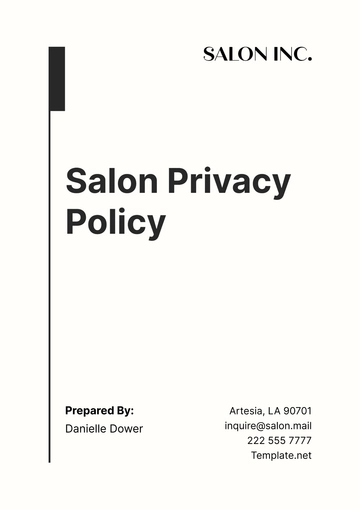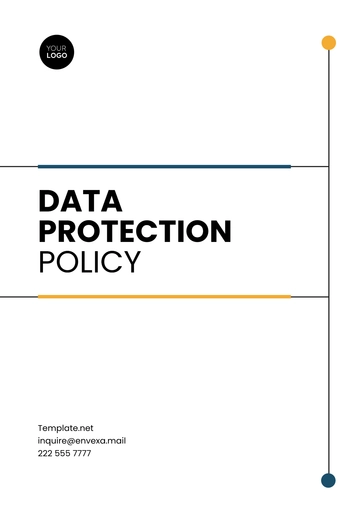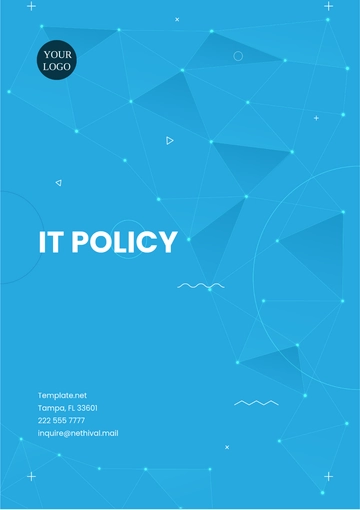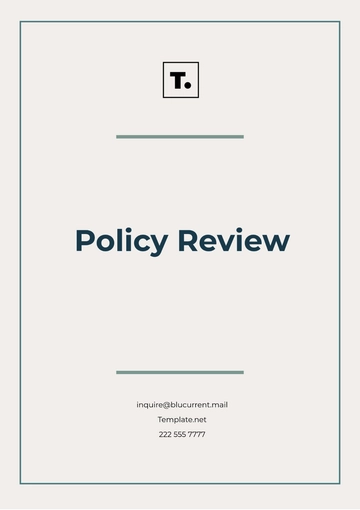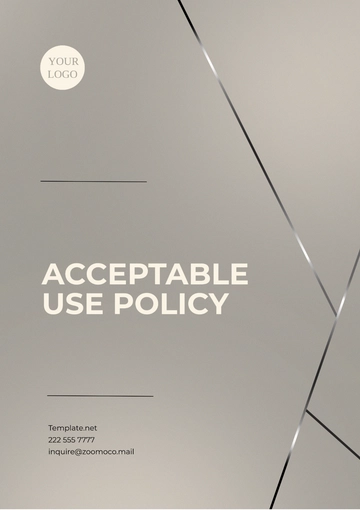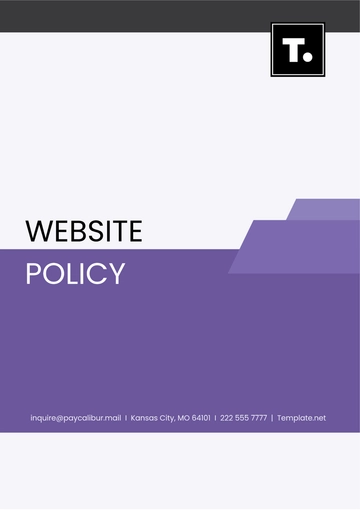Free Sales Lead Policy & Procedure
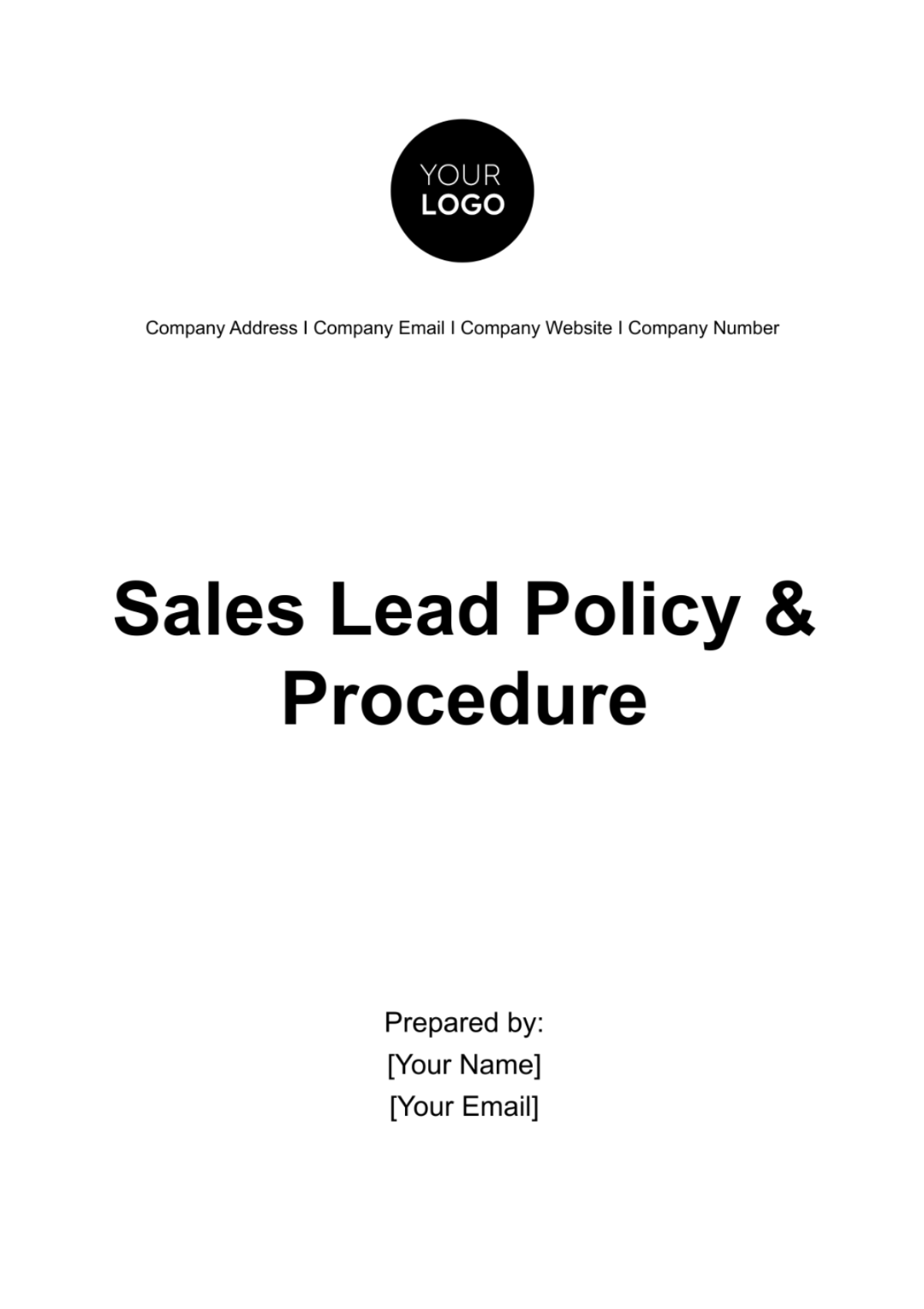
I. Lead Generation
A. Diverse Lead Generation Channels: Leads may be generated through a diverse array of channels, harnessing the power of modern marketing practices. These include but are not limited to:
Inbound Marketing Efforts | Our marketing team actively creates content, such as blog posts, whitepapers, and webinars, to attract potential customers to our website. Inbound leads are a valuable source of qualified prospects. |
Website Forms | Our website is equipped with user-friendly forms to capture lead information, ensuring a seamless user experience and quick lead capture. |
Social Media | Engaging in social media campaigns, advertising, and posting relevant content helps us reach a broader audience, generating interest and leads. |
Trade Shows And Events | Participating in industry events and trade shows provides an opportunity to connect with prospects and capture leads from attendees. |
Direct Outreach | Our sales team may engage in targeted outbound campaigns, reaching out to potential customers via email or phone. |
B. Lead Source Documentation: The source of each lead is of paramount importance. Sales representatives are responsible for meticulously documenting the source of each lead in our CRM system. This tracking ensures that marketing efforts are measured effectively and helps in optimizing lead generation strategies.
C. Marketing Team Responsibility: Our dedicated marketing team takes charge of devising and executing lead generation campaigns. They work collaboratively with the sales team to ensure a steady and high-quality flow of leads to our sales representatives.
By embracing diverse lead generation channels and closely tracking lead sources, we aim to provide our sales team with a continuous stream of qualified prospects, ultimately driving our revenue growth and market presence.
II. Lead Capture
A. Timely Lead Entry: Sales representatives are required to promptly enter lead information into the CRM system within 24 hours of initial contact or lead generation. This ensures that leads are captured while their interest is still warm and helps maintain data accuracy.
B. Complete Data Entry: When capturing leads, it is crucial to provide comprehensive and accurate information, including the lead's full name, company name, contact details, source of the lead, and any specific notes or preferences shared by the lead during the initial contact.
C. Unique Lead ID: Each lead must be assigned a unique Lead ID, generated by the CRM system. This Lead ID serves as the primary reference point for tracking and managing the lead's journey through the sales funnel.
D. Lead Source Tagging: To evaluate the effectiveness of various lead sources, sales representatives should tag leads with the specific marketing campaign or channel that generated the lead. This practice allows for precise analysis of lead origin and the return on marketing investments.
E. Duplication Check: Before entering a new lead into the system, sales representatives should perform a thorough check to ensure there are no duplicate entries for the same lead. This practice maintains data cleanliness and avoids redundancy.
F. Lead Verification: In cases of self-generated leads or leads acquired from third parties, sales representatives are responsible for verifying the lead's authenticity and confirming the lead's interest in FictionalTech Solutions' products or services. Verified leads take precedence in the follow-up process.
G. Data Standardization: Ensure that data entry adheres to a consistent format for information such as phone numbers, email addresses, and company names. This standardization enhances data accuracy and simplifies communication with leads.
By enhancing the "Lead Capture" section, we emphasize the importance of timely, complete, and accurate data entry while also focusing on lead verification and data standardization, which are critical for maintaining high data quality and maximizing the effectiveness of the lead management process.
III. Lead Qualification
A. Lead Scoring And Criteria: Leads will undergo a comprehensive qualification process, where each lead is evaluated against predefined criteria to determine its quality and readiness for engagement. This process includes a lead scoring system that assigns numerical values to leads based on factors such as demographics, engagement level, and alignment with our products and services. These lead scoring criteria will be continually refined to ensure accuracy and relevance.
B. Lead Persona Development: In addition to lead scoring, our team will work on developing detailed lead personas to better understand the motivations, pain points, and needs of potential customers. This persona-based approach will allow for more personalized and effective engagement strategies.
C. Real-Time Data Enhancement: Whenever possible, we will enrich lead data with real-time information from external sources to gain a deeper understanding of leads' current circumstances and preferences.
D. Buyer's Journey Alignment: Leads will be assessed in terms of their position within the buyer's journey, whether they are in the awareness, consideration, or decision stage. This will help in tailoring the communication and content to their specific needs and progression.
E. Lead Qualification Meetings: For high-potential leads, sales representatives may conduct qualification meetings to gather further insights, validate lead information, and establish a more personalized connection.
F. Lead Quality Triage: Leads will be categorized as "Hot," "Warm," or "Cold" based on the results of the qualification process. Hot leads signify strong potential for conversion, warm leads require further nurturing, and cold leads may be earmarked for future re-engagement campaigns.
G. Feedback Loop: Sales and marketing teams will maintain an open feedback loop to continually improve lead qualification criteria and share valuable insights for refining lead personas and the scoring system.
IV. Lead Assignment
A. Leads are a vital resource, and their successful conversion depends on the strategic allocation of resources. To ensure an optimal match between leads and sales representatives, the following procedures for lead assignment are observed:
Territorial Assignment | Leads are primarily assigned based on geographical territories. Each sales representative is responsible for a specific geographic area, allowing them to build local relationships and understanding. |
Product And Service Expertise | When a lead exhibits a strong interest or specific need for a particular product or service, it will be assigned to a sales representative with expertise in that area. This specialization ensures a tailored approach. |
Lead Workload Balancing | Care is taken to distribute leads evenly among sales representatives to prevent overburdening and ensure a fair opportunity for success. |
B. Assignment details are promptly communicated to the respective sales representatives through the CRM system and via email notifications. Sales representatives are encouraged to review their assigned leads promptly to initiate timely contact.
C. Should a lead's characteristics or behavior change during the sales process, necessitating a different assignment, this should be promptly communicated to the Sales Manager, who will oversee reassignment in alignment with the criteria mentioned above.
D. Collaborative efforts among sales representatives are encouraged. Should a representative encounter a lead with unique needs or potential cross-selling opportunities, they are encouraged to collaborate and seek support from colleagues with the relevant expertise.
E. In cases where a lead has been previously assigned to another representative but expresses a preference for a different contact within our company, such preferences should be honored when possible.
F. In the event of a representative's extended absence, the Sales Manager is responsible for reassigning their leads temporarily to maintain consistent engagement.
These procedures aim to maximize the efficiency of our lead assignment process, ensuring that each lead receives the attention it deserves and increasing the likelihood of successful conversion.
V. Follow-Up And Tracking
Personalized Engagement | Sales representatives should initiate contact with leads within 24 hours of assignment. All communications should be highly personalized to the lead's interests and needs. This includes addressing the lead by name, referencing their specific inquiries, and demonstrating a deep understanding of their pain points. |
Multi-Channel Approach | Nurturing should occur through a multi-channel approach, encompassing email, phone, social media, and other relevant platforms. The choice of channel should align with the lead's preferences and engagement history. |
Value-Added Content | Throughout the nurturing process, provide valuable content such as educational articles, case studies, and webinars that address the lead's challenges and offer solutions. This content should be tailored to the lead's stage in the buyer's journey. |
Timely Follow-Up | Consistent follow-up is essential. Sales representatives should maintain regular contact, addressing any questions or concerns promptly. The timing and frequency of follow-up should reflect the lead's level of interest and engagement. |
Lead Scoring Adaptation | Continuously monitor and adapt lead scoring as leads progress through the nurturing process. Adjust lead scores based on their interactions and behaviors, ensuring that the most engaged and ready-to-buy leads are prioritized. |
Lead Segmentation | Leads may have different needs and buying timelines. Segment leads into categories such as "Hot Leads," "Warm Leads," and "Cold Leads," and tailor the nurturing approach accordingly. |
Feedback Loop | Encourage leads to provide feedback on their experience with our company's nurturing process. This feedback will help us continually refine and improve our approach. |
Respect And Personalization | Ensure that the nurturing process respects the lead's preferences and boundaries. Avoid excessive communication and honor any opt-out requests promptly. Always maintain a respectful and professional tone in all interactions. |
Handoff To Sales | When a lead reaches a certain readiness level, defined as per the Lead Scoring Guidelines, the lead should be handed off to the sales team for more direct sales activities, maintaining a seamless transition. |
Documentation | All interactions and touchpoints with leads should be meticulously documented in the CRM system to ensure a comprehensive understanding of their journey and to provide insights for future nurturing efforts. |
VI. Follow-Up And Tracking
Prompt Response | Sales representatives are expected to initiate contact with leads within 24 hours of lead assignment. The initial contact should be made through the lead's preferred communication channel, whether it's email, phone, or another method, as indicated in the lead information. |
Documentation Of Interactions | It is essential to maintain a comprehensive record of all lead interactions. Sales representatives must diligently enter all calls, emails, meetings, and other correspondence in the CRM system. Each interaction should include date, time, content, and any specific lead responses or objections. |
Communication Scheduling | Sales representatives should schedule follow-up activities based on the lead's status and communication history. This may include setting reminders for future contacts, ensuring that no lead is left unattended or forgotten. |
Customized Messaging | Tailor your follow-up messages to the specific needs and interests of the lead. Personalization is key to building rapport and demonstrating an understanding of their unique requirements. |
Handling Objections | If a lead raises objections or concerns, the sales representative should be prepared to address them professionally, offering solutions or additional information as necessary. Objections and resolutions should be noted in the CRM for future reference. |
Escalation Procedures | In cases where a lead requires additional attention, special handling, or escalation to a higher level of management, a clear procedure should be followed as outlined in the Escalation Guidelines. |
Lead Progression | Leads should be tracked through various stages in the sales funnel, from initial interest to potential opportunity, and finally to conversion. The CRM system should reflect this progression, helping to identify bottlenecks and areas where additional support is needed. |
Consistent Communication | Regular, but not intrusive, communication is essential. Sales representatives should strike a balance between staying engaged with leads and respecting their preferences for communication frequency. |
VII. Reporting And Analytics
A. Regularly assess and analyze key performance indicators (KPIs) to evaluate lead conversion rates, revenue generated from leads, and lead source effectiveness.
B. Provide monthly reports to the management team for informed decision-making and strategic planning.
C. Continuously refine strategies based on insights gained from data analysis to optimize lead management processes.
D. Collaborate with the marketing team to ensure alignment between lead generation efforts and sales outcomes.
E. Identify areas for improvement and innovation within the lead management process and explore new avenues for lead generation.
VIII. Lead Disposition
A. Leads that are uninterested or not yet ready to buy will be categorized as "Cold Leads" and tagged accordingly in the CRM system.
B. Marketing may take ownership of some of these leads for nurturing campaigns, while others will be archived for future reference.
C. A systematic review process will be conducted periodically to re-evaluate the status of "Cold Leads" and identify potential opportunities for re-engagement.
IX. Data Privacy And Compliance
A. All lead management activities must adhere to applicable data privacy regulations, as outlined in our company's Data Privacy Policy.
B. Regular training and awareness programs will be conducted to ensure all staff members understand their responsibilities in safeguarding customer data and complying with data privacy laws.
C. Periodic audits and reviews will be carried out to assess compliance with data protection regulations and our internal Data Privacy Policy, with corrective actions taken as necessary to maintain compliance and protect customer data.
X. Lead Recycling
A. Lead Recycling is the process of revisiting leads that have previously shown interest but have since become unresponsive or uninterested.
B. Sales representatives are responsible for periodically re-engaging these leads by providing fresh information, incentives, or a different approach to reignite their interest.
C. The aim is to convert dormant leads into active prospects and potentially into paying customers, ensuring that no valuable leads are left untapped. This process encourages persistence and creativity in lead nurturing.
XI. Training And Guidelines
Training: All sales and marketing staff will undergo comprehensive training on the Sales Lead Policy & Procedure, covering lead generation, capture, nurturing, and compliance with data privacy regulations. Training sessions will be scheduled regularly to ensure team members are up to date with best practices.
Guidelines And Resources: To support the implementation of this policy, a repository of guidelines, templates, and resources will be made accessible to team members. These resources will serve as practical references for efficient lead management and communication strategies, enabling staff to adhere to the procedure effectively.
This Sales Lead Policy & Procedure provides a structured framework for the efficient and systematic management of sales leads. By adhering to this policy, our organization aims to maximize lead conversion rates, foster consistency, and ensure the privacy and compliance of customer data.
To effectively implement and uphold these standards, the following action items are recommended:
Team Training Schedule: Establish a regular schedule for comprehensive training sessions on the Sales Lead Policy & Procedure. Ensure that all sales and marketing staff are up-to-date with the latest best practices.
Feedback Mechanism Implementation: Introduce a structured feedback mechanism for team members to provide insights on the practical application of the policy. This will facilitate continuous improvement and adaptation to evolving market dynamics.
Technology Integration: Explore and implement advanced features of the CRM system to streamline lead management processes further. Leverage technology for efficient data entry, lead assignment, and comprehensive tracking.
Communication Plan: Develop a communication plan to disseminate updates or revisions to the Sales Lead Policy & Procedure. This ensures that all team members are consistently aligned with the latest protocols.
- 100% Customizable, free editor
- Access 1 Million+ Templates, photo’s & graphics
- Download or share as a template
- Click and replace photos, graphics, text, backgrounds
- Resize, crop, AI write & more
- Access advanced editor
Streamline your sales lead management with the Sales Lead Policy & Procedure Template, available exclusively on Template.net. This editable and customizable template ensures consistency and efficiency in lead handling. Tailor policies effortlessly with our Ai Editor Tool, adapting them to your organization's unique requirements. Elevate your sales processes with clarity and precision.
You may also like
- HR Policy
- Restaurant Policy
- Company Policy
- Accounting Policies and Procedures
- Website Policy
- Privacy Policy
- Safety Policy
- School Policy
- IT and Software Policy
- Law Firm Policy
- Construction Policy
- Interior Design Policy
- Travel Agency Policy
- Education Academic Policy
- Security Policy
- Real Estate Policy
- Expense Policy
- Software Policy







